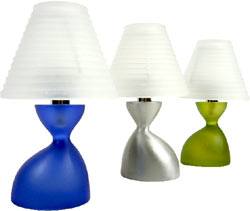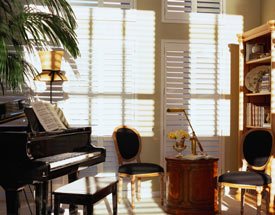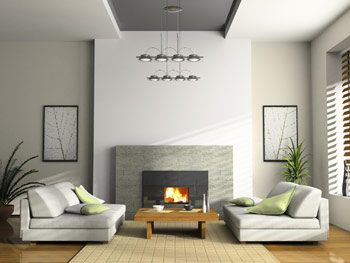
Many times good interior design counts on a certain kind of sleight-of-hand: The very best job is the one you don't notice, because it doesn't call attention to itself.
Good lighting, in a home or business, is one of those things that's invisible - if it's done well. You only notice the lighting of a room if it's too bright or too dim, not if it's just right. Our goal in offering this series of articles on Lighting is to give you some concrete advice on how to light a room so effectively that no one notices whether you're using florescent or incandescent lights, track lighting or standing lamps. They'll notice only that the room feels comfortable, and that they want to come back again.
As we continue our series on lighting, it's now time to look at another function of lighting: mood.
One of the most common questions we get here at the New York Institute of Art and Design is: What is "mood lighting," and how can I achieve it?
First, we often think mood lighting must mean scented candles strategically placed to create a romantic atmosphere. That plus a little Barry White playing in the background?

But in reality, mood lighting is much more important to every facet of the life being lived in the home. The first consideration should be how much ambient lighting there is in a room. To assess this, look at the room at different times of day: morning, afternoon, evening, and night, without any lights on at all. Even at night, you may have light coming in from a bright street lamp, whereas in the morning, you may find that one room is considerably darker than another.
Next, consider how you might add to the ambient lighting in the room. In a living or dining room, you could add a central light from the ceiling, which will bring in diffuse light to the room.
Of course, this isn't the best approach in a bedroom, where you want softer lighting, as a central fixture will be too bright, and will call attention to itself.
NYIAD Tip
One possibility often used in contemporary design is a pair of down lights in the ceiling, either over the bed or over a living room sofa. While these can create unflattering directional light if they're very bright, when toned down with dimmers they can cast gentle pools of light, accentuating the focus, providing spillover light onto the wall paintings, and washing the whole room with a pleasant ambient light.
Another option to supplement ambient lighting in a room where there is indirect lighting is to use strip lights behind a wall-to-wall valance over the windows.

When thinking about mood lighting, you also want to light the major decorative objects in the room — a mirror above a dresser or paintings in a living room.
Should you project light directly onto a mirror? No, this would produce reflected glare. All you want to do is provide sufficient illumination to show off the mirror frame, and to provide enough light for one to use the mirror. You could install sconces on either side of the mirror, and these should be sufficient for both purposes.
What about the paintings? These too should be sufficiently lit, either with museum lights placed above them, or with wall sconces on the sides.
In short, then, you want the mood lighting of any home to enhance whatever mood it is you're trying to achieve, by using the natural ambient light and then enhancing it in a variety of ways.





